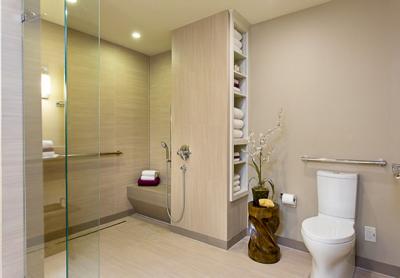‘Aging in Place’: An East End Phenomenon

Universal Design, the design of products and environments suitable for everyone, from children to the elderly, is a term increasingly heard on the East End, where retirees continue to swell the population. Put simply, it is intentionally planning houses and public spaces to meet changing needs, design that allows “aging in place.” And it is happening here.
“Everyone is living longer, and it’s a reality that we haven’t really dealt with a lot here in the United States,” said the architect Andrew Reyniak, a Sagaponack resident whose firm, ARPAC, is based in New York City.
“One of the sad things is Universal Design often gets cleaved off from design in general, and unfortunately, the only way that Universal Design usually enters a designer’s experience is through the Americans With Disabilities Act, and things that are built into code requirements. So you get these architects in school who say, ‘Oh, man, you mean I have to learn to deal with A.D.A. requirements?’ They fail to realize that Universal Design does not have to look like a handicapped room at a hotel where everything is oversized,” he said.
Among the many good reasons to consider Universal Design is the data on the nation we have become, and the East End in particular. “It’s worth noting that Universal Design in America is not just driven by age or orthopedic disability — it’s increasingly driven by obesity issues as well. . . . People who require design features such as double-wide seating or lower beds because they’re obese,” Mr. Reyniak said.
A recent AARP study found that 89 percent of people 50 or older want to remain in their own homes indefinitely, and many are already preparing to age in place, even if it’s confined to retrofits such as adding a first-floor master suite.
Nick Martin of Martin Architects in Sagaponack said even when age is not yet a consideration, aging-in-place planning is appropriate. “What I’ve been noticing is there are a number of people in the 30 to 50-year-old zone who have moved their offices out here and are making their second home their primary residence now, and that’s been happening out here for about a dozen years,” he said.
When correctly done, Universal Design does not sacrifice aesthetics, whether people are challenged by hearing, sight, or mobility. Specifications such as curbless shower entrances and pullout cabinet drawers are helpful for children as well as the elderly, as are safety features such as non-slip floors, levers to open doors and cabinets rather than knobs, and wider hallways and doorways. A hand-held showerhead on a slide bar might replace one that is wall-mounted.
Barbara Feldman, an East Hampton interior designer, said that years ago, when she first began migrating from working on large health facilities to residences and made “Aging in Place/Universal Design” a specialty, many of her clients were rarely interested.
“The way it does come out is in what things they ask me for,” Ms. Feldman said. “They want to make their homes places they can stay in as they get older. They want design that can adapt to them rather than force them to adapt to the design. They’re describing exactly what aging in place is.”
“I always believed that the environment has an impact on the healing ability, and even on just maintaining your health. People just feel better at home. They don’t want to go somewhere else. It’s emotional. It’s psychological. Even if you don’t have a challenge now, someday you probably will. It often has nothing to do with age. It could just be surgery, a broken leg, the unexpected. That’s why I tell people, ‘Universal Design is something that makes sense for everybody.’ It’s a win-win for all.”
